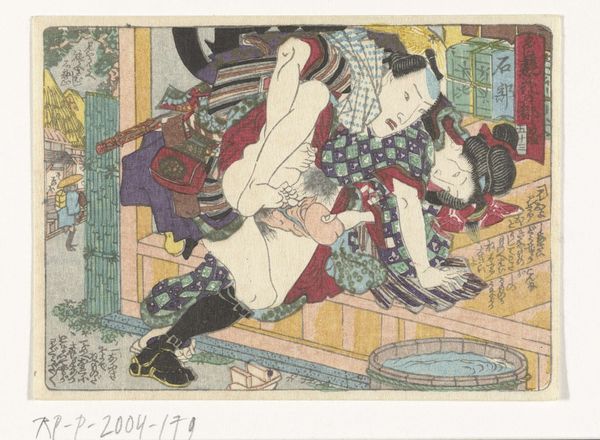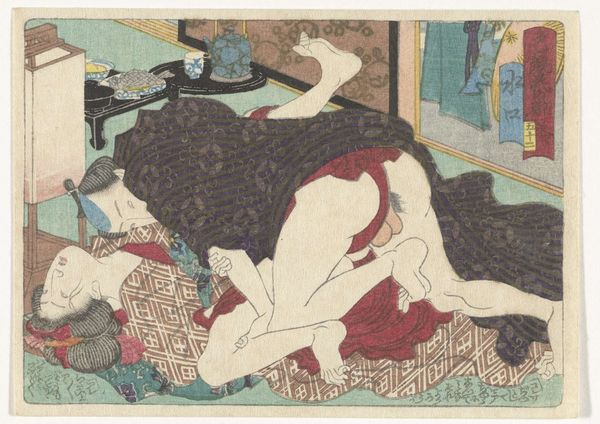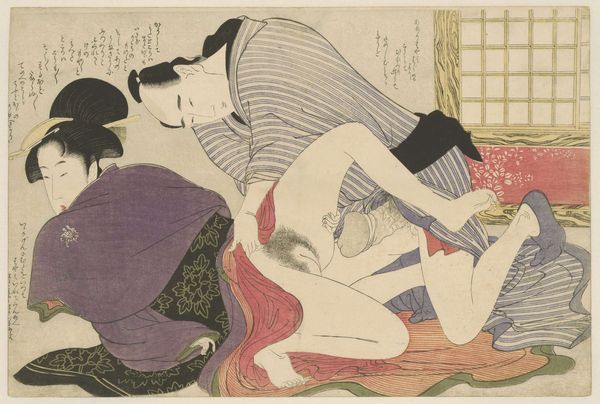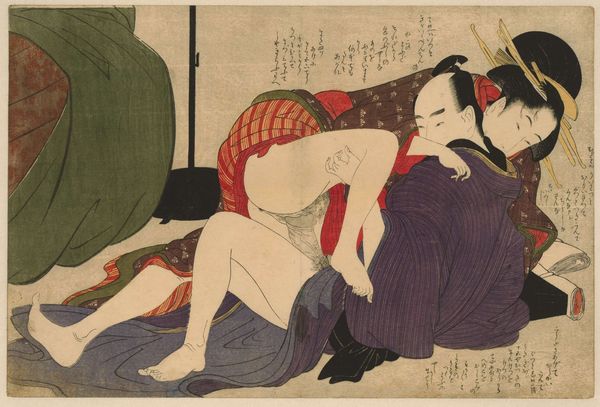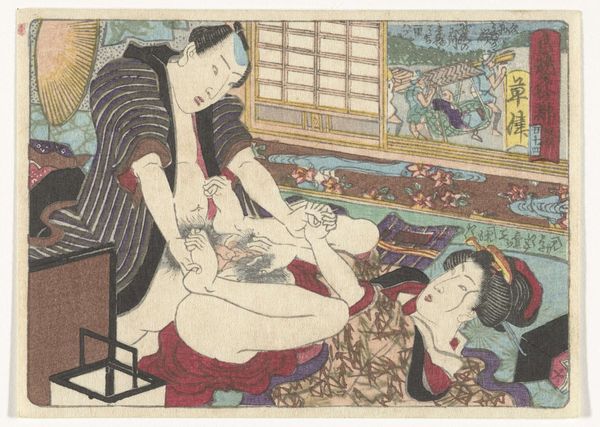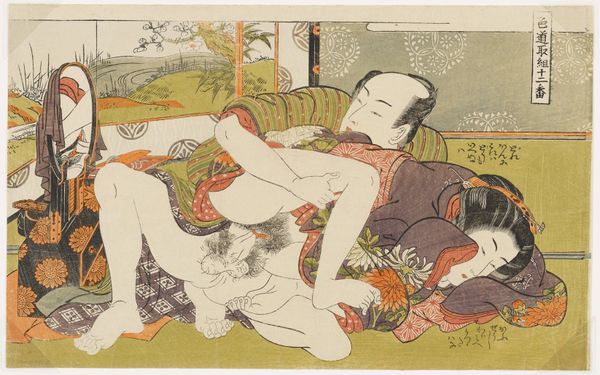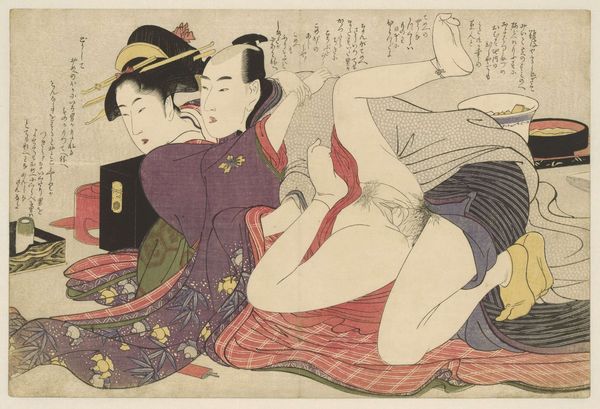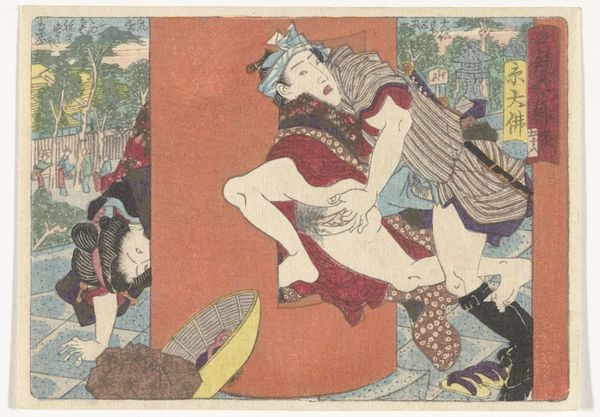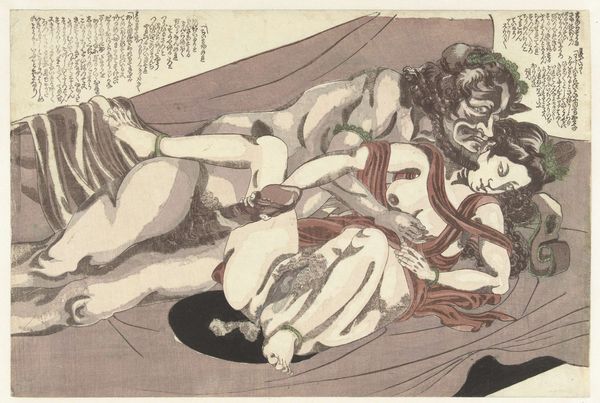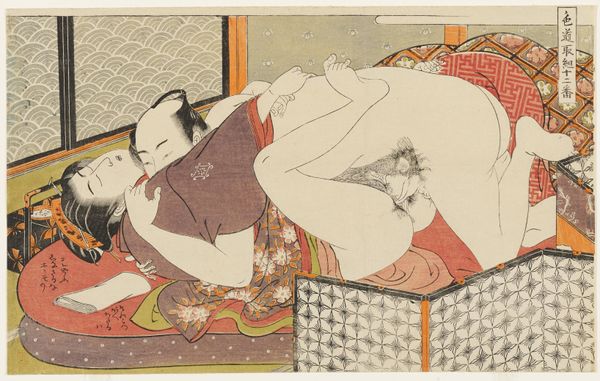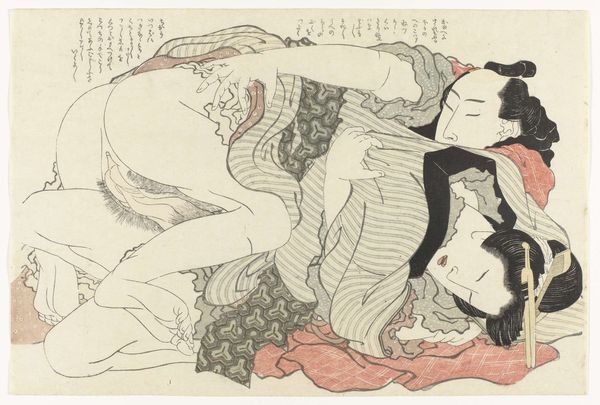
print, woodcut
# print
#
ukiyo-e
#
figuration
#
woodcut
#
genre-painting
#
erotic-art
Dimensions: height 89 mm, width 123 mm
Copyright: Rijks Museum: Open Domain
Editor: So, here we have Utagawa Kunisada's woodcut print, *De pleisterplaats Fujikawa*, dating back to around 1835-1845, and currently housed in the Rijksmuseum. What strikes me is how openly it presents a scene of intimacy; it's surprisingly direct. What do you make of its context within the art world and its portrayal of sexuality? Curator: Well, it's vital to consider the ukiyo-e tradition in which this print exists. These "pictures of the floating world" were deeply interwoven with the socio-political climate of Edo-period Japan, especially the urban culture. Works like this, explicitly erotic *shunga*, circulated relatively freely, even if officially frowned upon. How do you see this imagery fitting, or challenging, conventions within that society, if at all? Editor: I guess I'm wondering, was this for public consumption? Was it subversive, or something more mundane? I imagine there would have been some pushback... Curator: That's exactly the kind of question a historian should be asking. The line between what was accepted versus censored shifts continuously based on class, gender, and public versus private settings. Remember, the Tokugawa shogunate held firm control. Works were printed in relatively large numbers. And these prints weren't just "art" as we understand it today; they were consumer objects. I wonder, considering the gaze within this composition, do you see a deliberate attempt to either cater to or even challenge the male perspective? Editor: It's hard to know! I guess that's what's interesting: we see a glimpse of pleasure here, and a moment from a specific time. It invites so many questions about viewership. Curator: Exactly. Thinking about the audience allows a broader scope. It moves us toward understanding the artwork within its own time while recognizing that art history isn’t static but changes in dialogue across cultures, genders, classes and disciplines.
Comments
No comments
Be the first to comment and join the conversation on the ultimate creative platform.
